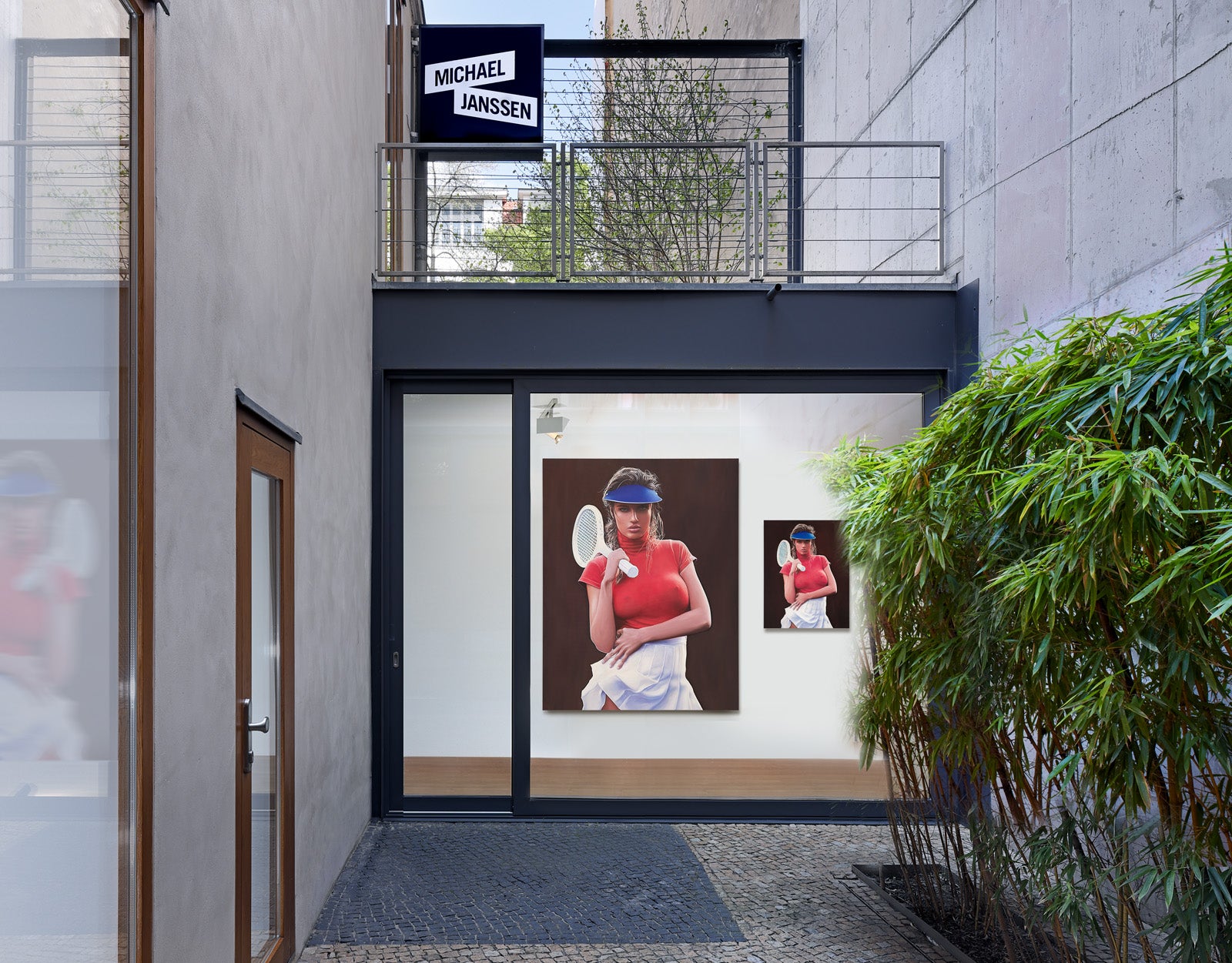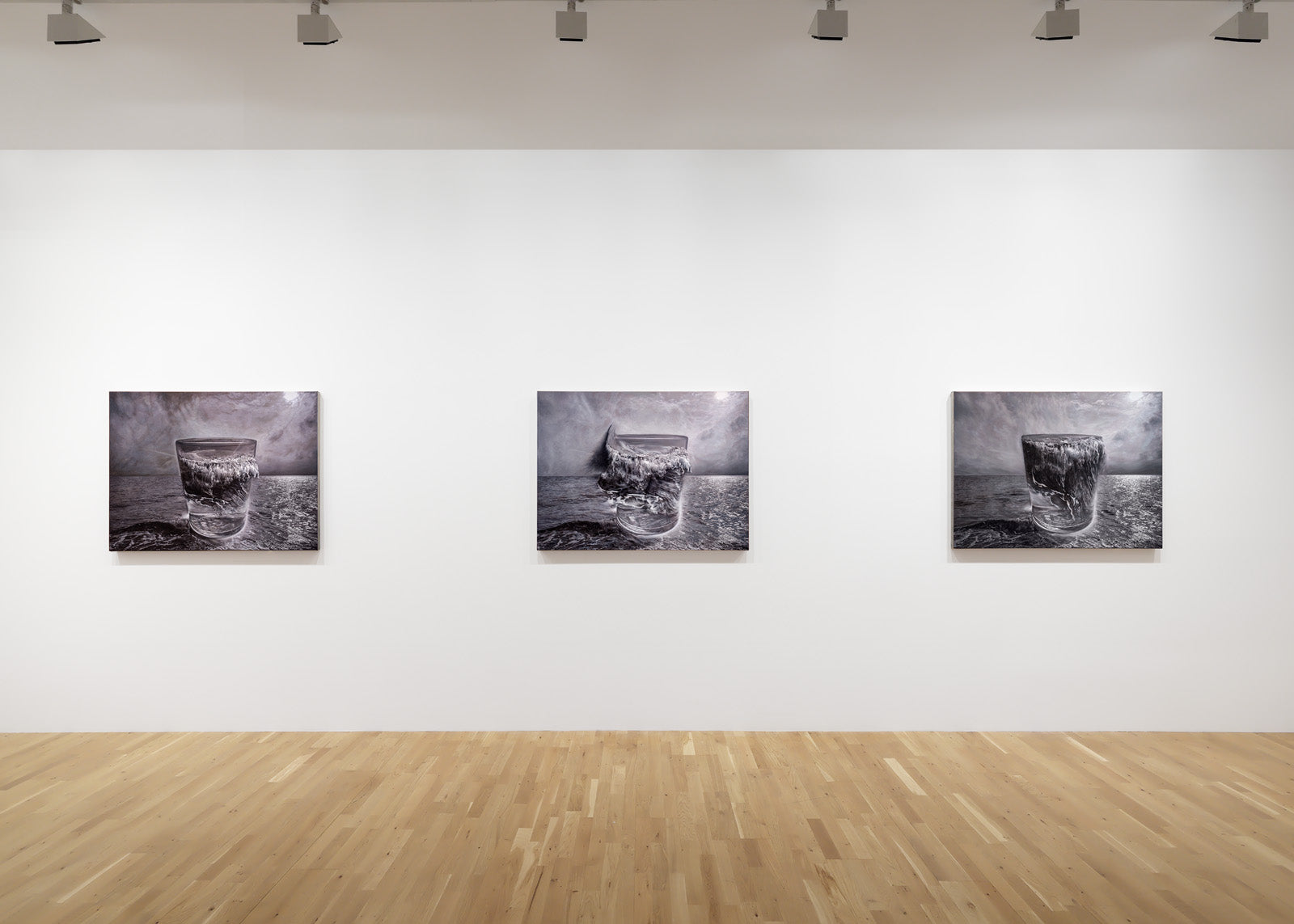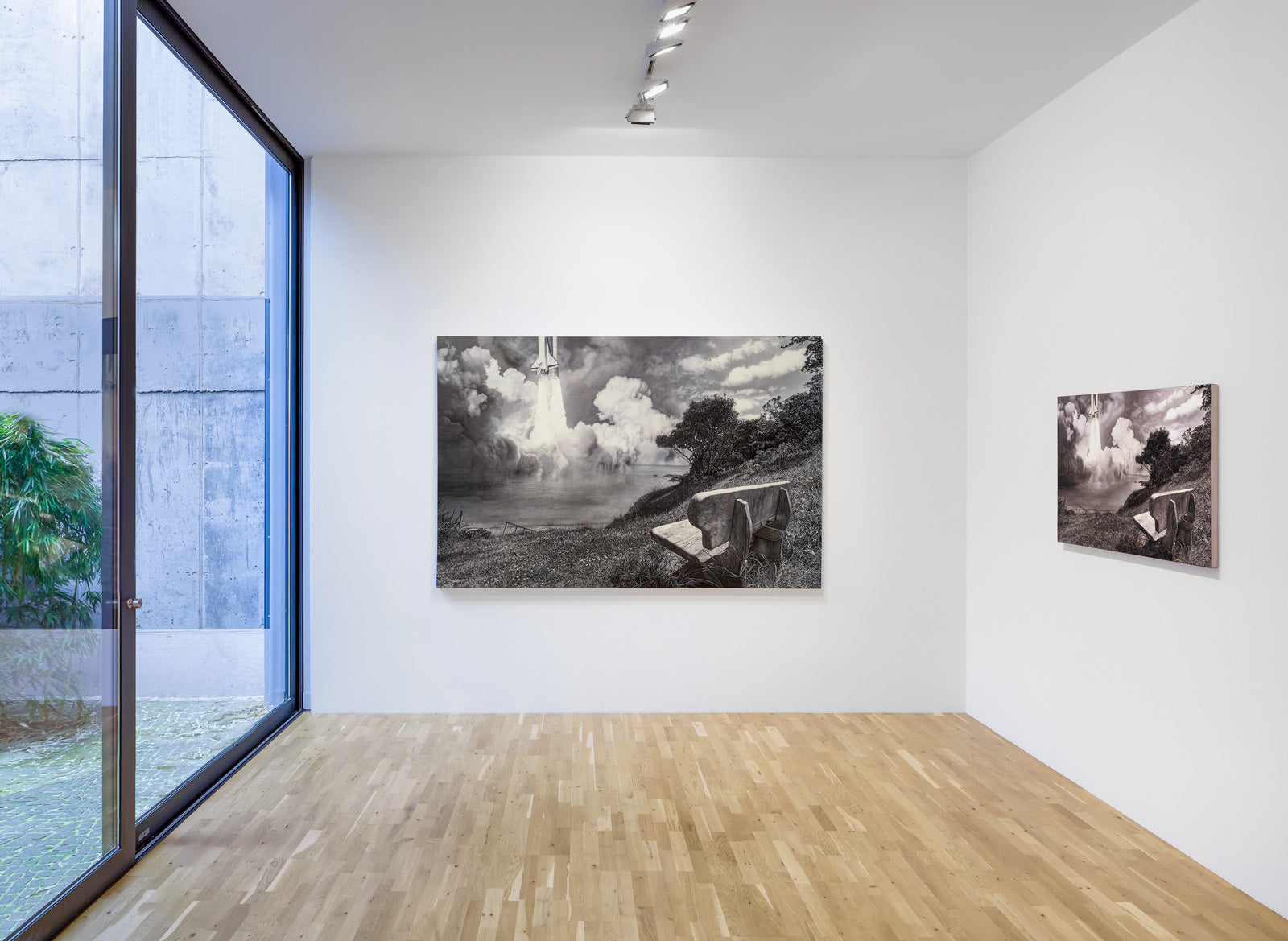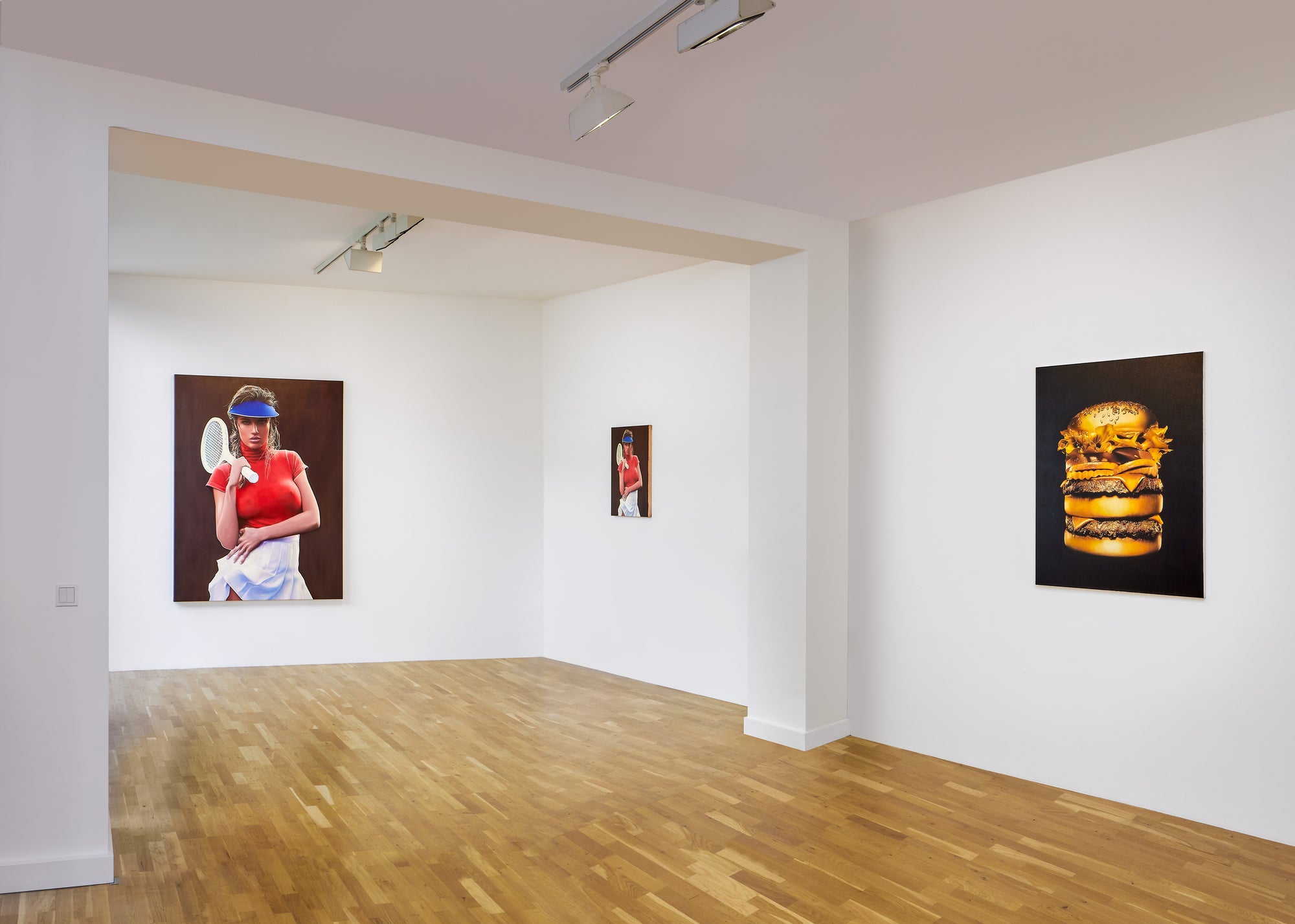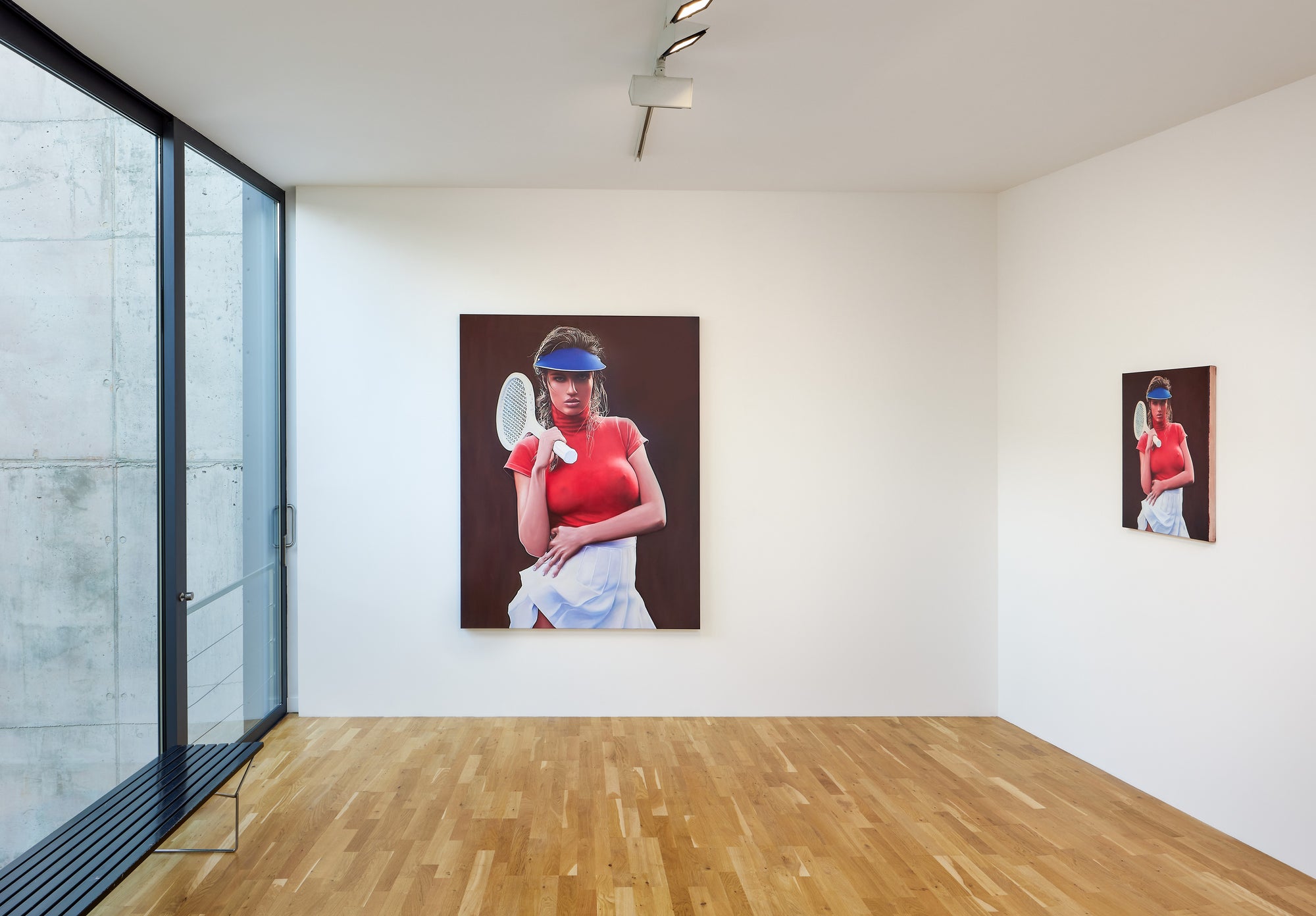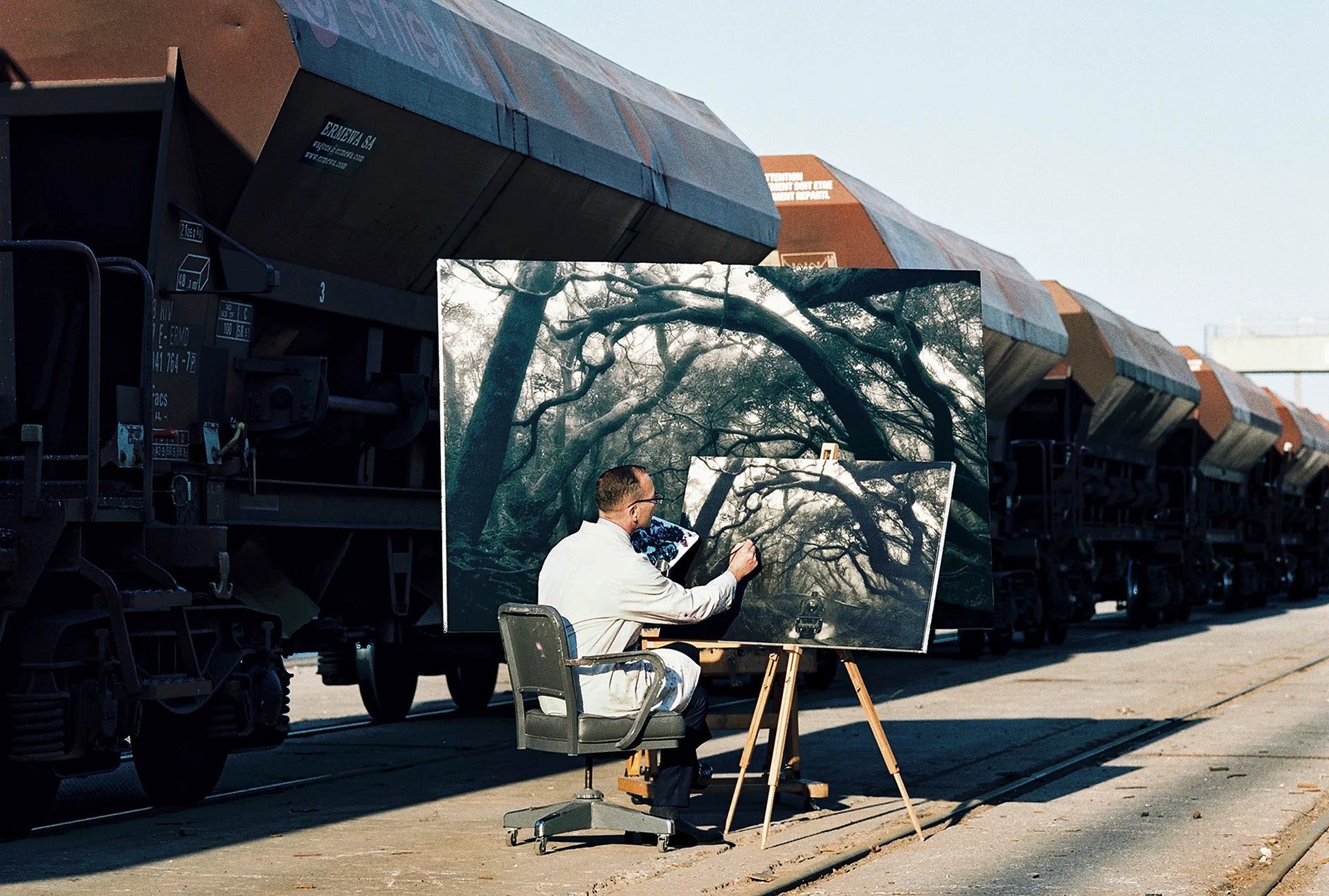Christoph Steinmeyer - Haben oder Sein
22 April—30 May 2023
Opening: Friday, 21 April, 6—9 pm
Michael Janssen Berlin is pleased to announce the exhibition Haben oder Sein by Christoph Steinmeyer.
- Download: Portfolio ( EN )
- Download: Press Release ( EN / DE )
- For press inquiries, please contact: info@michaeljanssen.gallery, Tel. +49 30 259 272 50
Type “the most beautiful image in the world” into your browser and look for results. What picture do you expect to see?
In his ongoing artistic research project, spanning over eight years, German neo-surrealist Christoph Steinmeyer delves into the realm of popular imagery, probing the influence of algorithms, cookies and location tracking to uncover the mechanisms that shape our contemporary visual culture. This exploration has resulted in a series of paintings "The Most...", into which the artist incorporates elements of internet culture and memes, using them to comment on the process of commodification of visual imagery.
Steinmeyer's interest in the ambiguous role of coveted contemporary artifacts is reflected in the title of his show, To Have or to Be? It references psychoanalyst Erich Fromm's eponymous book which explores the fundamental differences between two modes of existence—having and being. In "The Most...", Steinmeyer extends this debate by examining how, under capitalism, images are transformed into objects of desire that are filtered and artificialized to appeal to the masses. The series consists of hyperrealistic paintings depicting a golden hamburger, a tennis player—ephemeral glimpses into the search for absolute beauty on the internet.
Painted in seductive golden-yellow hues, the hamburger stands as a poignant symbol of consumer culture. The meat is depicted with photographic precision, evoking a sense of ravenous eroticism. Steinmeyer's portrayal of the tennis player seems to draw inspiration from fashion photography that tends to objectify and sexualize public figures. However, the artist’s intention was to create an image of a modern Amazon, who uses her body as a powerful tool for feminist empowerment, rather than an object of male desire.
The "Most..." series employs a vivid chromatic palette characterized by contrasting colors that possess a tactile, almost velvety quality, reminiscent of lavish objects. The golden, red, white, and black hues have been meticulously chosen to enhance the exclusivity of the depicted images, eliciting a feeling of visual opulence commonly found in luxury advertisements. The use of such vibrant colors adds a layer of provocation and visual hunger to the paintings, inviting the viewer to indulge in pictorial consumerism.
In contrast to the confident palette of “the most beautiful” images, the introspective atmosphere of Steinmeyer’s landscape canvases is shaped by ambiguous grisaille tonalities that comprise multitudes of hues, granting the paintings a dream-like quality. We find similar gray-scale color compositions in the works depicting the launch of a rocket in desolate rural scenery. The empty wooden bench in the lower right corner, uncomfortably close to the canvas edge, intensifies the buzzing tension provoked by the sensation of absence —like a silent nightmare that unfolds in slow motion, electrifying the air with unsettling premonitions. The titles of the works, Challenge and Baltic Sea, hint at what this strange fantasy sequence might be about. The cinematically composed scene alludes to the tragic 1986 accident in which the American Space Shuttle Challenger broke apart, only 73 seconds into its flight. By transposing the spacecraft to the Baltic Sea, Steinmeyer creates a fantastic narrative that draws our attention to the real climate and humanitarian catastrophes present in Europe today.
Steinmeyer’s surrealism is profoundly conceptual. The meticulously repainted hyperrealist copies of his own works question the very essence of the debate about originality in art. How can we value a painting while knowing that it may be a reproduction?
Challenge and Baltic Sea are identical replicas reproduced at different scales. When placed together, these duplicates mirror each other, trapping the viewer inside a labyrinth of multiplying reflections. Another vivid example of this poetic transgression is the artist’s series of four glass paintings, each of which playfully re-contextualizes the title of the show. The deeply personal transformative process the artist underwent during lockdown is portrayed through the tangled web of visual paradoxes that inhabit these oneiric seascapes, which Steinmeyer calls his self-portraits. Depicted in photorealistic detail, the sea shimmers under the faint sunlight on one side of the painting, while appearing devoid of light on the other side, as if the glass were blocking the sun's rays from extending across the water. In contrast to the background, which remains almost unaltered in all four paintings, the sea inside the glass is presented to us in a variety of states: the serene translucency depicted in the painting “To Have and To Be” transforms into a dramatic tempest that distorts the limits of the image in “To Be or to Have”, providing a nauseating sense of motion as it bursts through the crystal. The physical installation of these paintings, hung in a linear row, endows the space in between with a tactile physicality palpable for the spectator. The absurdist logic of Steinmeyer’s surreal dreamscapes transgresses the limits of fiction, challenging the viewer with their amped-up intensity.
These introspective hybrids merge classical genres of landscape and still life painting into an existential chaos of magical hyperrealism where neither having nor being is relevant. Luminous portals into the threshold of becoming, Steinmeyer’s paintings project a high-resolution hyper-objectivity combined with an eerie panorama of oneiric distortions. Is it we who contain the sea? Or is it the sea that contains us?
Text: Karina Abdusalamova

